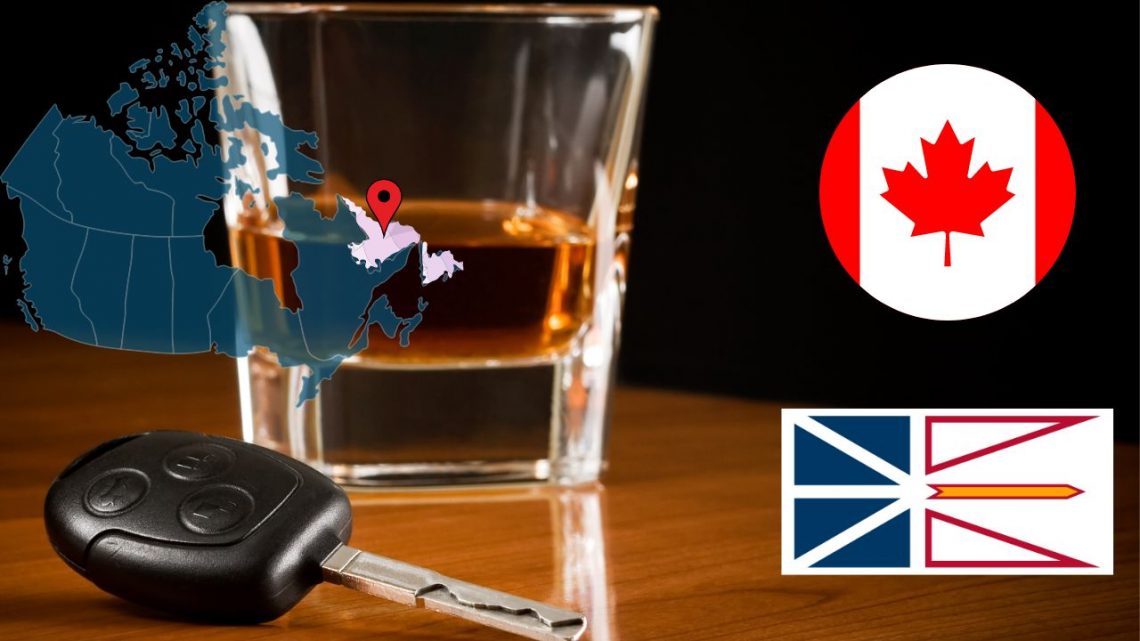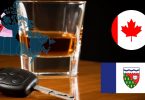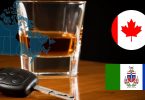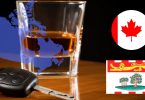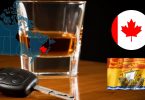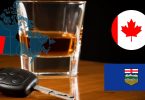In Newfoundland and Labrador, the maximum permissible blood alcohol content (BAC) is set at 0.05% or 50 mg per 100 ml of blood. This limit is stricter compared to other Canadian provinces.
Before we go any further into impaired driving in Newfoundland and Labrador, please keep in mind that the goal of this post is solely informational. It should not be construed as an encouragement to drink and drive.
If you must travel after drinking, we recommend using a cab or hiring a designated driver. It is also critical to stay up to date on current impaired driving rules. Therefore regularly visiting the province’s official website is necessary.
What is the legal alcohol limit for driving in Newfoundland and Labrador?
In Newfoundland and Labrador, the legal alcohol limits for drivers vary depending on the driver’s age and experience. These measures are in place to ensure the safety of all road users by promoting responsible drinking and driving behaviors. Below are the specified legal alcohol limits for different categories of drivers:
- Regular Drivers: The legal blood alcohol content (BAC) limit is set at 0.05%. This applies to most drivers who hold a full driving license.
- Drivers Under 22 Years of Age: These drivers are required to maintain a zero blood alcohol content (BAC) level at all times while driving, regardless of their license class.
- Novice Drivers: Similar to drivers under 22, novice drivers, irrespective of their age, must also adhere to a zero BAC limit while driving. This rule applies to all drivers in the process of acquiring their full driving privileges.
Drink and Drive Penalties and Punishments in Newfoundland and Labrador
Driving under the influence of alcohol poses a significant risk not only to the driver but also to other road users. Newfoundland and Labrador have set strict penalties and punishments to combat drunk driving and ensure road safety. It’s crucial for drivers to be aware of these consequences and adhere to the laws to avoid severe penalties. For the most current information, drivers should regularly consult the official state website, as regulations and penalties can be updated.
Graduated Driver Licensing Program:
Newfoundland and Labrador enforce a Graduated Driver Licensing Program to ensure novice drivers gain the necessary skills and experience in a controlled and safe manner. This program applies to all new drivers and includes two levels for novice drivers:
- Level I (Novice, Learner): A phase for learning with specific restrictions to ensure safety.
- Level II (Novice, Licensed Driver): The first 12 months of driving post-successful completion of the road test, carrying forward the commitment to safety.
Driving Restrictions and Penalties:
- Learner (Level 1) Restrictions:
- Mandatory 12-month period at Level 1 before eligible for a road test (can be reduced with an approved Driver Education Program).
- Must be accompanied by a licensed driver with a minimum of 4 years of experience.
- Zero Blood Alcohol Content (BAC) for both the novice and the accompanying driver.
- Driving is not permitted between midnight and 5 a.m.
- Display of a “NOVICE DRIVER” sign on the vehicle.
- Novice Driver (Level II) Restrictions:
- A 12-month mandatory period at Level II.
- Restrictions on the number of passengers based on seatbelts.
- Zero Blood Alcohol Content (BAC).
Penalties for Non-Compliance:
- Roadside Suspensions: Immediate suspension for BAC levels exceeding 0 mg%. Suspension periods escalate with subsequent offenses, starting from 2 months for the first offense to 6 months for the third.
- Vehicle Seizure and Impoundment: Applies under various conditions, including driving with a suspended license, without insurance, or with a BAC exceeding allowed limits for specific driver categories.
- Ignition Interlock Program: Mandatory for drivers convicted of impaired driving, involving the installation of a device that prevents the vehicle from starting if the driver’s BAC exceeds a preset limit.
Additional Notes:
- Education and Treatment Programs: Multiple suspensions may require completion of an Alcohol Education Program or an alcohol dependency evaluation/treatment program.
- Demerit Points: Accumulation of demerit points leads to additional suspensions, with a “Responsible Drivers Workshop” required for reinstatement.
- Up-to-Date Information: Regulations and penalties may change; drivers are encouraged to regularly check the official state website for the latest updates.
This comprehensive approach to penalties and punishments for drunk driving in Newfoundland and Labrador reflects the province’s commitment to road safety. By adhering to these laws, drivers contribute to a safer driving environment for everyone.
How can I calculate if my alcohol blood limit is legal in Newfoundland and Labrador
In Newfoundland and Labrador, as in many jurisdictions, law enforcement officers utilize breathalyzer tests to determine a driver’s blood alcohol content (BAC). This method offers a quick and relatively accurate measure of the alcohol concentration in a person’s bloodstream, serving as a critical tool in enforcing DUI laws. Recognizing your BAC before getting behind the wheel is crucial for ensuring that you’re driving legally and safely.
As an experienced phlebologist with a decade of expertise, I’ve seen firsthand the challenges individuals face in estimating their BAC and the severe consequences of impaired driving. To assist in making informed decisions about alcohol consumption and driving, I recommend two methods for estimating your BAC:
- Use a High-Quality Alcohol Breathalyzer: The BACtrack S80 stands out for its professional-grade accuracy, reliability, and ease of use. It is DOT & NHTSA approved and FDA 510(k) cleared, making it a trusted choice among healthcare professionals and law enforcement agencies alike. Keeping a BACtrack S80 in your vehicle is a proactive step towards responsible drinking and driving practices. It can help Newfoundland and Labrador residents better understand their BAC levels and make safer decisions about driving after consuming alcohol.
- Utilize a BAC Calculator: Alongside other phlebologists and with the help of web developers, I’ve created an online BAC calculator. This tool takes into account various factors such as weight, gender, the amount of alcohol consumed, and the time frame over which it was consumed to provide an estimated BAC level. While this calculator is designed to help you gauge your BAC, it’s important to remember that individual factors can affect accuracy, and it should not be used as the sole determinant of your ability to drive.
It’s important to note that both these methods are estimative and cannot guarantee 100% accuracy in determining your BAC. Factors such as metabolism, food intake, and individual physiological differences can affect BAC readings. However, they can serve as valuable tools in preventing drunk driving by offering a general idea of your intoxication level.
Remember, the legal BAC limit in Newfoundland and Labrador is 0.05% for regular drivers, with zero tolerance policies for drivers under 22 and novice drivers. Using these tools can help you stay within legal limits and, more importantly, contribute to safer roads for everyone. Nonetheless, the safest approach is always not to drive if you’ve consumed any amount of alcohol.
Ways to Avoid Driving with a High BAC in Newfoundland and Labrador
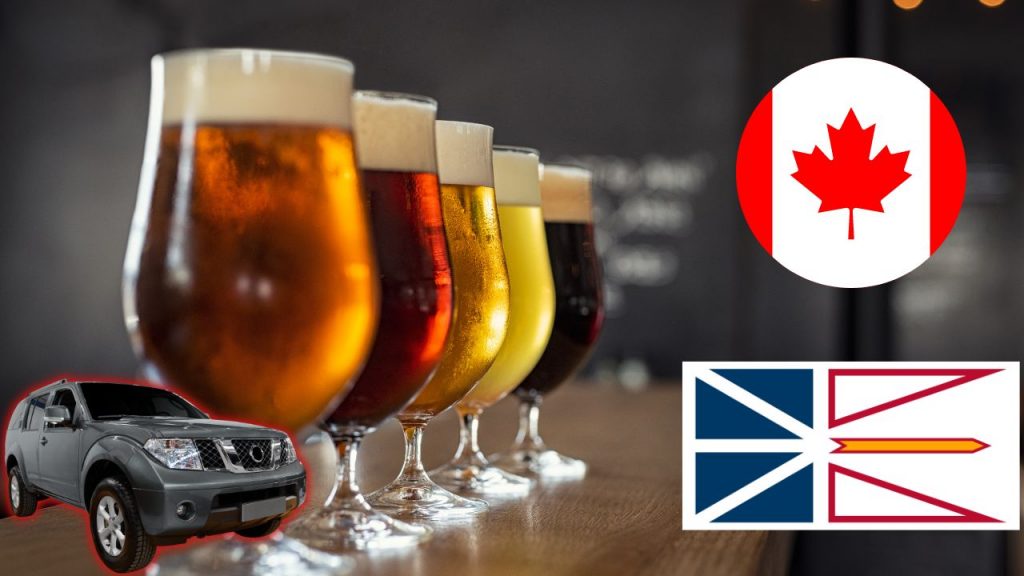
Driving under the influence of alcohol is a serious offense that can lead to dangerous situations on the road. In Newfoundland and Labrador, there are several smart alternatives to ensure you and others stay safe if you’ve been drinking. Here are some practical recommendations to avoid driving with a high blood alcohol concentration (BAC):
- Utilize Ride-Sharing Apps or Local Taxi Services: Leveraging technology or traditional taxi services is one of the most straightforward ways to prevent drunk driving. Ride-sharing apps like Uber offer convenient and safe transportation options at your fingertips. Additionally, local taxi companies provide reliable service across various parts of Newfoundland and Labrador. For instance, in St. John’s, Jiffy Cabs is a popular choice, while in Corner Brook, Corner Taxi Ltd offers dependable rides. These services can be easily accessed through a phone call or their respective apps, ensuring you have a safe way to get home without the need to drive.
- Order a Designated Driver Service: If you’ve driven to a location and find yourself unable to safely drive back due to alcohol consumption, a designated driver service is an excellent solution. These services provide a driver who can safely drive you and your car back home, eliminating the worry of leaving your vehicle behind. In St. John’s, Wheelway Transportation Limited offers such services, and in Corner Brook, Ride In Style Limo is an option. Simply searching “designated driver service” along with your city name on Google can help you find a suitable service nearby.
By choosing either of these alternatives, you not only ensure your safety but also contribute to the safety of other road users. Newfoundland and Labrador offer various options to accommodate your transportation needs after drinking, encouraging responsible behavior and decision-making. Remember, planning ahead before you go out can make it easier to choose a safe way home and avoid the risks associated with high BAC levels while driving.
Sticking to Newfoundland and Labrador Impaired Driving Laws: Sad Statistics
Driving under the influence remains a leading cause of criminal death in Canada, with 377 impaired driving convictions in Newfoundland and Labrador alone in 2021, according to Mothers Against Drunk Driving (MADD). The province enforces stringent rules to deter drunk driving and enhance road safety, underscoring the critical importance of adhering to these regulations.
To ensure your safety and that of others, it’s advisable to avoid driving after consuming alcohol. Opting for alternatives like calling a friend, utilizing taxi services, or leveraging public and ride-hailing options can be life-saving choices. If driving is absolutely necessary, confirm that your blood alcohol concentration is within legal limits, using a reliable breathalyzer for accuracy, and always stay informed about current traffic laws.

